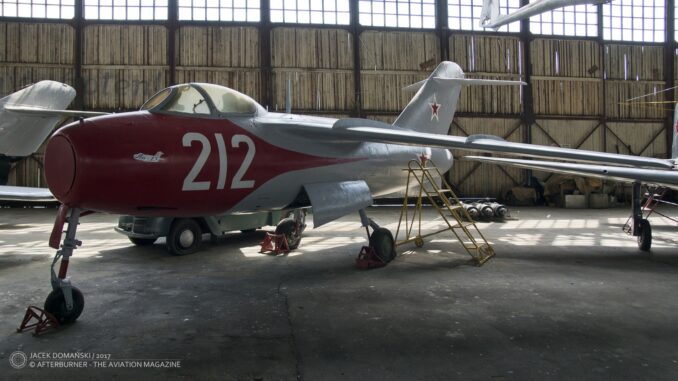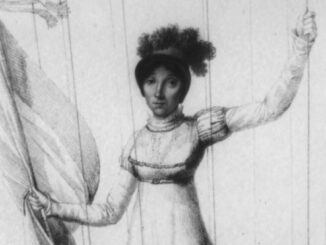
Maiden flight of ´aircraft 174´, the jet aeroplane being a base for an early Soviet fighter, Lavochkin La-15 (Ла-15, NATO reporting name: Fantail)
Lavochkin construction bureau, also known as OKB-301, is usually being associated with propeller-powered fighters from the World War II era: LaGG-1, LaGG-3, La-9 and La-11. Nevertheless, it was also involved in the development of early Soviet jet fighters, starting with Gu-VRD (Гу-ВРД) ducted jet engine aeroplane from 1943 and then the series of post-war prototypes – La-150, La-152, La-156, and La-160.
With the announcement of the possibility to acquire British-made turbojet engines – Rolls-Royce RB.41 Nene and RB.37 Derwent – Lavochkin started to work on fighters that would be able to be powered by those engines. As the popular rumour says, the first prototype of new aeroplane was completed even before the arrival of Rolls-Royce engine to the Soviet Union, based only on its technical documentation.
That first prototype was designated as ´168´ and was a perspective, modern jet fighter with swept wing, able to achieve the speed of 0,9 Ma and made to be powered by RB.41 Nene. However, the decision was made that Derwent would be the first engine to be delivered to the Soviet Union. Without abandoning the development of ´aircraft 168´, Lavochkin made a slightly smaller and lighter copy of it that could use the less-powered RB.37 engine. This prototype was designated as ´174´.
The maiden flight of ´aircraft 174´ took place on 8th January 1948, just a few days after its main competitor – Mikoyan-Gurevich I-310. Regrettably, Lavochkin´s new jet suffered from heavy vibrations that, finally, resulted in a crash of the first prototype in May 1948. The vibrations were eliminated in the second variant, ´174D´.
Several tests of the new fighter were performed in the second part of 1948 and, although being generally well-received by the test pilots, there was no enthusiasm among the Soviet aviation authorities. Lavochkin´s fighter was compared with Yak-25 and I-310 and although it was superior to Mikoyan-Gurevich aircraft in terms of horizontal manoeuvrability and acceleration, the ´aircraft 174´ had lower rate of climb and ceiling than Yak-25.
Nevertheless, both ´174´ and I-310 were approved for serial production, under the designations of ´La-15´ and ´MiG-15´. And the serial production revealed the biggest disadvantage of Lavochkin´s jet – high laboriousness and complexity, partially being a result of adapting the ´168´ prototype for much lighter engine. Despite several changes made while already manufacturing the first series and reducing the hours of labour needed to produce La-15 fighter, it was impossible to achieve any satisfying results.
Although there were 650 of La-15 initially ordered, the production was ceased after manufacturing 235 aircraft. In this way, MiG-15 become the main fighter of the Soviet Air Force and other Eastern Bloc countries for many years.
It is also worth to mention that ´aircraft 168´ performed its first flight in April 1948 and the further evaluation proved it was superior to MiG-15. However, it was merely too late for Lavochkin´s fighter – the serial production of MiG-15 was fully on and many pilots were already trained for flying the Mikoyan-Gurevich fighters. There was therefore no economic reason to implement another jet fighter, or to replace the existing fleet of MiG-15s with new Lavochkin´s development.



